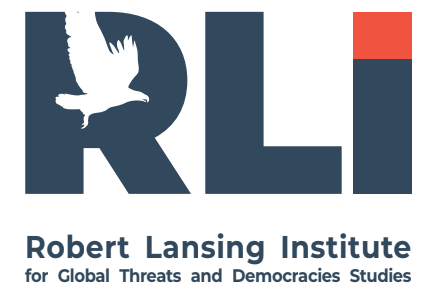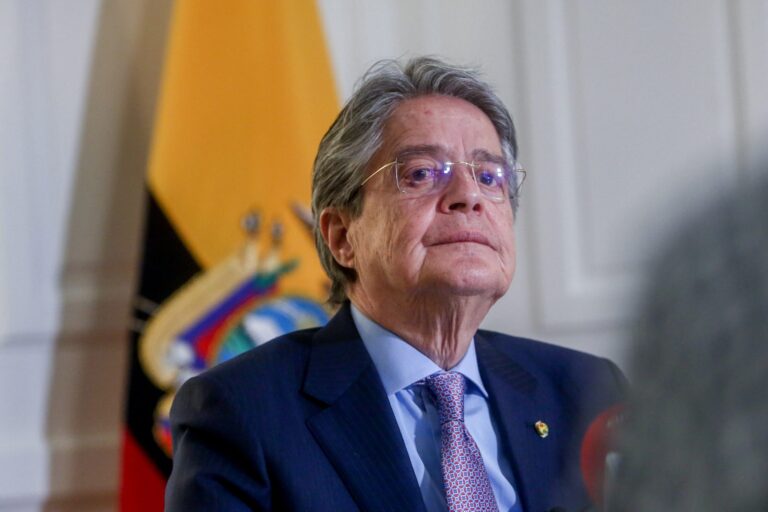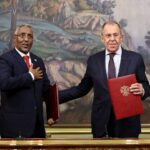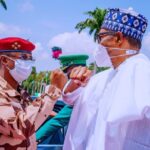1. Executive Summary
In early 2025, Ecuador passed a controversial new intelligence law aimed at restructuring the country’s security architecture amid rising violence and narcotrafficking. Marketed as a tool for national defense, the law expands surveillance authority, centralizes intelligence under the presidency, and reduces oversight. While the government defends it as a necessary response to escalating organized crime, critics argue it opens the door to authoritarianism, abuses, and political espionage.
2. Why Now? Political and Security Context
- Escalating Violence: Ecuador has witnessed a sharp rise in drug-related violence since 2021. The assassination of presidential candidate Fernando Villavicencio in 2023 shocked the nation and exposed systemic intelligence failures.
- State of Emergency Measures: Since President Daniel Noboa took office, Ecuador has operated under rolling states of emergency in several provinces, militarizing security in response to gang warfare.
- Political Capital and Polarization: Riding a wave of public insecurity, the government has capitalized on national fear to push through measures that would previously have been politically untenable.
→ Timing: the law emerges in a climate where national security trumps civil liberties in public discourse.
Ecuador has become a major hotspot for transnational drug trafficking, especially over the past five years. While Ecuador was once only a transit country, it is now a key logistics hub in the global cocaine supply chain. The main threats come not from local cartels alone, but from alliances between Ecuadorian gangs and powerful international criminal networks, including Mexican and Colombian cartels.
🇪🇨🔫 Main Cartels & Criminal Actors in Ecuador
1. Los Choneros
- Origins: Coastal gang based in Manabí province; originally linked to local extortion and smuggling.
- Current status: One of Ecuador’s largest and most violent gangs.
- Allies: Sinaloa Cartel (Mexico)
- Role: Logistics, security, and hitmen services for cocaine shipments through ports like Guayaquil and Esmeraldas.
- Leader (until 2020 assassination): Jorge Luis Zambrano (“Rasquiña”)
2. Los Lobos
- Rival of: Los Choneros
- Allies: Jalisco New Generation Cartel (CJNG) (Mexico)
- Strongholds: Chimborazo, Cotopaxi, and Santo Domingo provinces
- Activities: Drug transport, prison control, and assassinations
- Characteristics: Known for extreme brutality and rapid expansion
3. Tiguerones
- Breakaway group from Los Choneros
- Base: Esmeraldas (northern coast, near Colombia)
- Links: Colombian drug gangs, some factions of FARC dissidents
- Role: Riverine transport, port infiltration, cocaine trafficking
4. Águilas (Eagles)
- Smaller group, linked with Los Lobos
- Functions: Acts as subcontractors for larger groups; involved in microtrafficking, assassinations
5. Foreign Powers Behind the Violence
🇲🇽 Sinaloa Cartel
- Provides weapons, logistics, and funding to Los Choneros
- Uses Ecuador as a low-risk exit point to ship cocaine to the U.S. and Europe
- Embeds operatives to oversee operations directly at Ecuadorian ports
🇲🇽 CJNG (Cártel de Jalisco Nueva Generación)
- Competes with Sinaloa; backs Los Lobos and their offshoots
- Known for paramilitary tactics and brutal enforcement
🇨🇴 Colombian Cartels & Dissidents
- Gulf Clan (Clan del Golfo) and FARC dissident factions use Ecuadorian border provinces (like Sucumbíos and Esmeraldas) as corridors for cocaine.
- Sell wholesale product to Ecuadorian gangs for onward export.
💣 Strategic Functions of These Cartel-Backed Gangs
| Function | Who Does It | Description |
| Cocaine Transport | Los Choneros, Los Lobos | Port-to-port logistics, trucking routes |
| Port Control | Los Choneros, Tiguerones, Sinaloa operatives | Access to Guayaquil and Esmeraldas shipping nodes |
| Assassinations / Enforcers | Los Lobos, Águilas, CJNG-backed hitmen | Used to eliminate rivals and intimidate officials |
| Prison Control | All major gangs | Prisons serve as HQs and recruitment centers |
| Political Corruption | All, especially via Sinaloa Cartel | Bribery of police, judges, customs officials |
🎯 Who Stands Behind These Cartels Politically or Financially?
- Mexican Cartels (CJNG, Sinaloa): The strategic financiers and weapon suppliers, deeply embedded in Ecuadorian logistics chains.
- Colombian Traffickers: Continue to rely on Ecuadorian export routes as a safer alternative to northern Colombia.
- Ecuadorian Politicians & Officials: Several have been exposed for cartel ties (e.g., recent corruption cases in Guayas).
- Port Authorities & Customs: Frequently penetrated by organized crime — “narco-containers” pass with inside help.
- Foreign Brokers (Balkan Mafia, European Cartels): Use Ecuadorian gangs as cheap intermediaries for smuggling to Europe.
⚠️ Intelligence & Threat Assessment
- Narco-insurgency pattern: Ecuador is starting to resemble Mexico in the 2000s — where state control is challenged by heavily armed criminal groups.
- State capture risk: With political assassinations, bribery, and selective law enforcement, the cartels are actively shaping politics.
- Transnational expansion: Albanian, Italian, and Spanish cartels increasingly rely on Ecuadorian routes in collaboration with local gangs.
3. Core Provisions of the Law
- Creation of a new centralized intelligence agency, the National Intelligence Directorate (DNI), reporting directly to the presidency.
- Expansion of surveillance powers, including:
- Legal interception of communications with minimal judicial oversight.
- Mandatory data sharing from telecom and internet companies.
- Fusion of military and civilian intelligence operations under a unified command.
- Immunity for intelligence officers acting under “national security” mandates.
- Vague definitions of “national threat,” allowing intelligence use in political contexts.
4. Democratic Red Flags
🛑 1. Weak Judicial Oversight
- Wiretaps and surveillance can now be authorized under flexible “preventive” conditions, increasing the risk of abuse.
🛑 2. Intelligence Politicization
- With the DNI reporting directly to the presidency, separation between executive power and intelligence gathering collapses.
🛑 3. Suppression of Opposition
- The law allows monitoring of any “disruptive political movements” or “actors undermining public order,” creating a legal basis for spying on opposition figures, journalists, and NGOs.
🛑 4. Normalization of Militarized Intelligence
- Blurring the lines between external defense and internal order threatens to convert the military into a domestic surveillance force.
5. Key Figures and Interests
| Figure | Role | Interest / Involvement |
| Daniel Noboa (President) | Central figure pushing the law | Aims to consolidate control and show strength against crime |
| Arturo Félix Narváez (Minister of Defense) | Oversees militarization of intelligence | Believes in a “preemptive security doctrine” |
| General Gustavo Acosta | Head of Military Intelligence | Advocate of intelligence-military fusion; sees the law as “counterterror doctrine” |
| Manuela Bedoya (Opposition MP) | Vocal critic in National Assembly | Warns of “Peru-style intelligence state from the 1990s” |
| Private Security Contractors | Emerging behind-the-scenes actors | Seek contracts and data access from DNI for “consulting” roles |
6. Regional and International Implications
- U.S. and Colombian influence: The law draws from U.S. and Colombian counter-narcotics frameworks, raising questions about behind-the-scenes consultations or pressure.
- Model for the region? If the law is seen as successful, it may inspire similar efforts in Peru, Paraguay, and even parts of Mexico.
- Risk of diplomatic strain: If Ecuador uses the new law to target NGOs or international journalists, it may face backlash from EU or UN bodies.
7. Potential Consequences
✅ Positive
- Improved coordination of intelligence assets against cartels.
- Faster response to high-level security threats.
- Perceived restoration of control by the central government.
❌ Negative
- Increased targeting of political dissidents and activists.
- Chilling effect on investigative journalism.
- Risk of “deep state” formation — a permanent intelligence structure loyal to the presidency, not institutions.
- Damage to Ecuador’s image as a maturing democracy in Latin America.
8. Strategic Assessment
This law is not just about security, but about power consolidation. By redefining what constitutes a threat, the government may silence critics under the guise of national defense. The threat to democracy is real, particularly given Ecuador’s history of authoritarian flirtations during the Correa era.
It also reflects a global trend: post-COVID, post-Villavicencio, and in a multipolar security environment, states are leaning harder into intelligence and surveillance to maintain control. In Ecuador’s case, the price may be high.
9. Recommendations
For Ecuadorian Civil Society:
- Demand independent oversight bodies.
- Build coalitions of NGOs, media, and universities to monitor law enforcement abuses.
For International Partners:
- Condition security aid on human rights protections.
- Provide training for democratic oversight of intelligence agencies.
- Support independent press and whistleblower protections.
For Regional Institutions (OAS, UNASUR):
- Monitor implementation of the law for signs of political repression.
- Include Ecuador in regional dialogues about ethical intelligence practices.
Ecuador’s new intelligence law may succeed in temporarily tightening control over a fractured internal security landscape. But it does so at the cost of eroding democratic checks, weakening civil rights, and concentrating power in the executive. In the name of fighting cartels, the country may be building a legal framework for authoritarianism — one camera, one warrantless search at a time.




